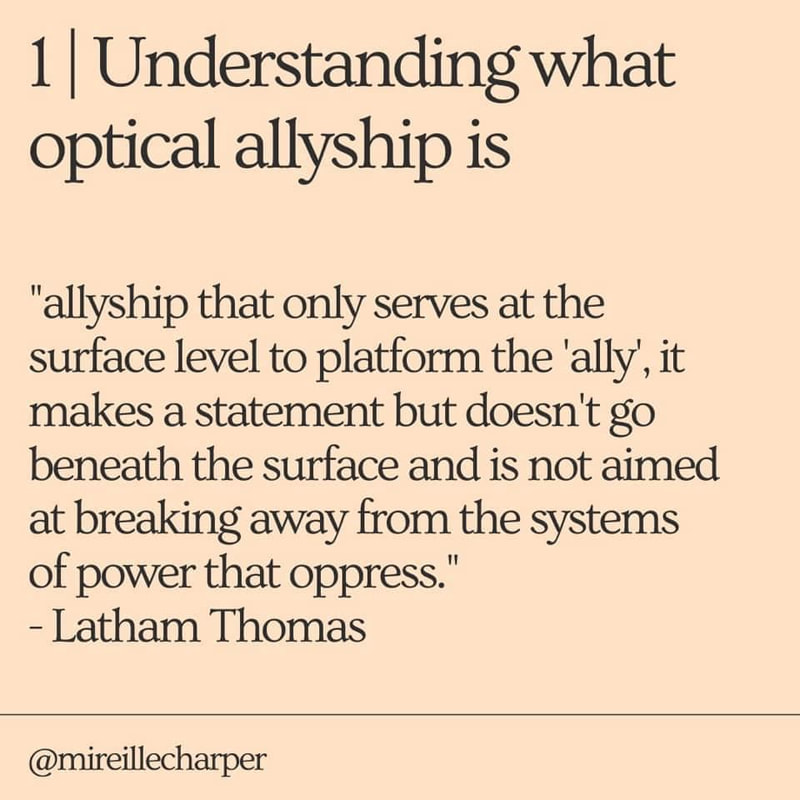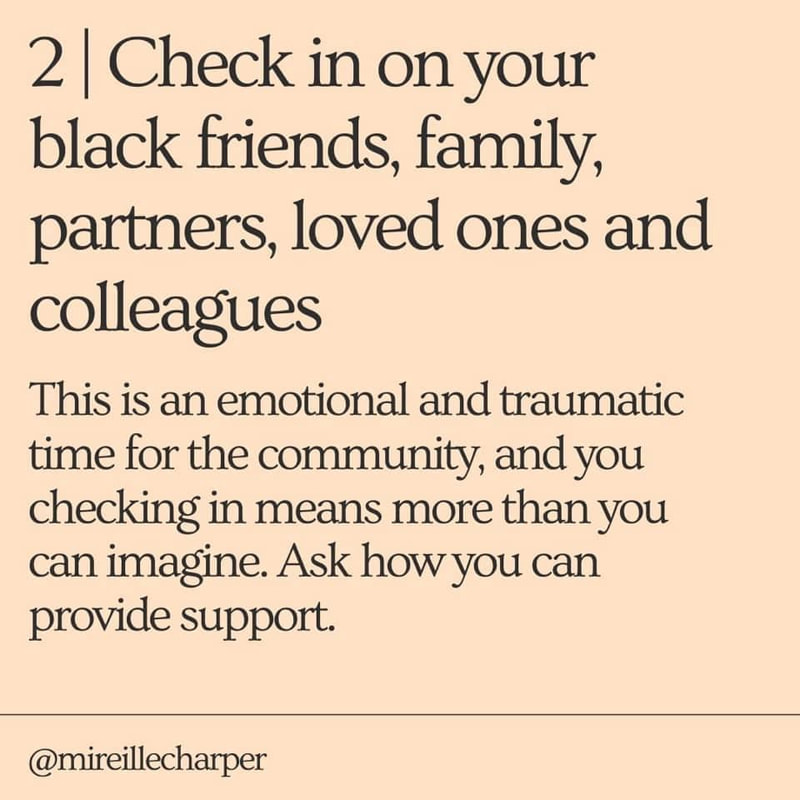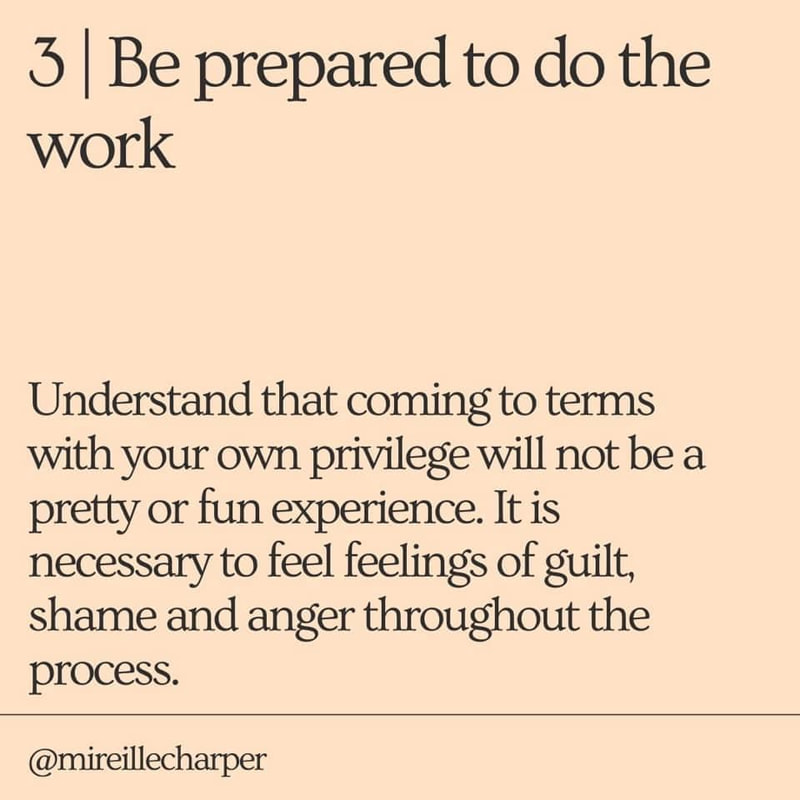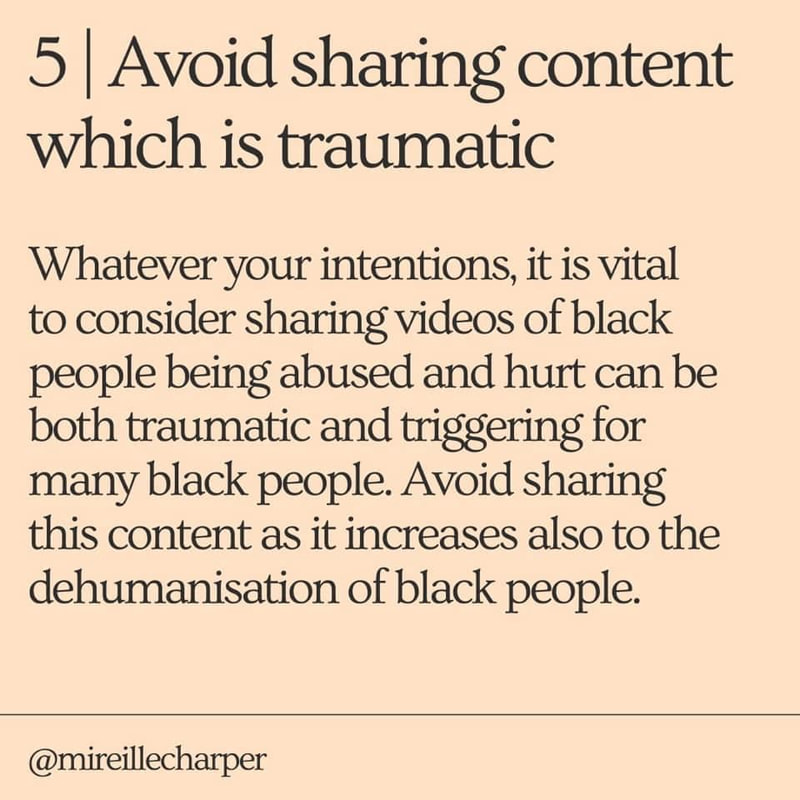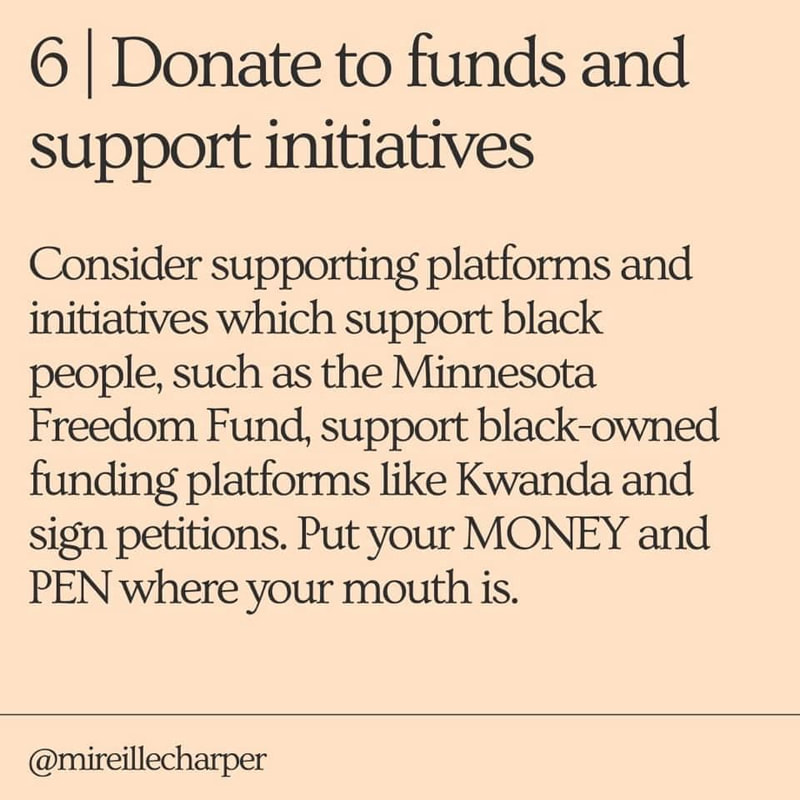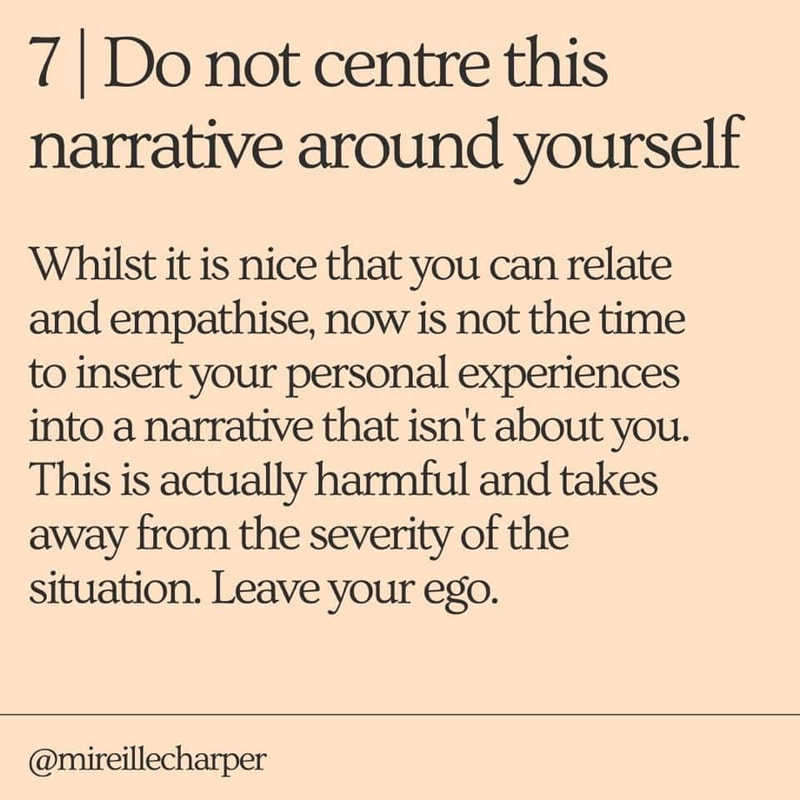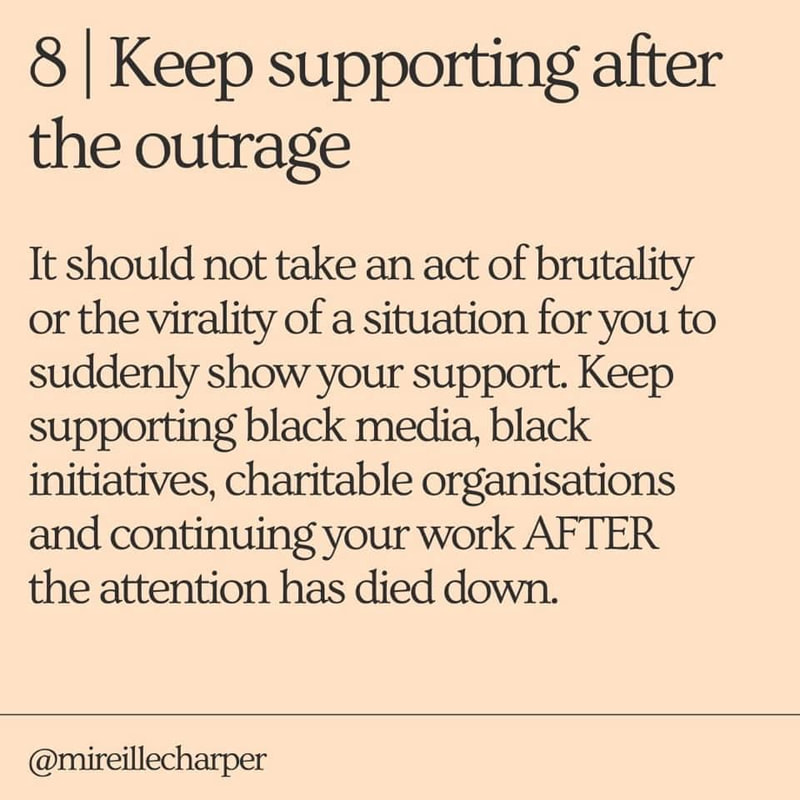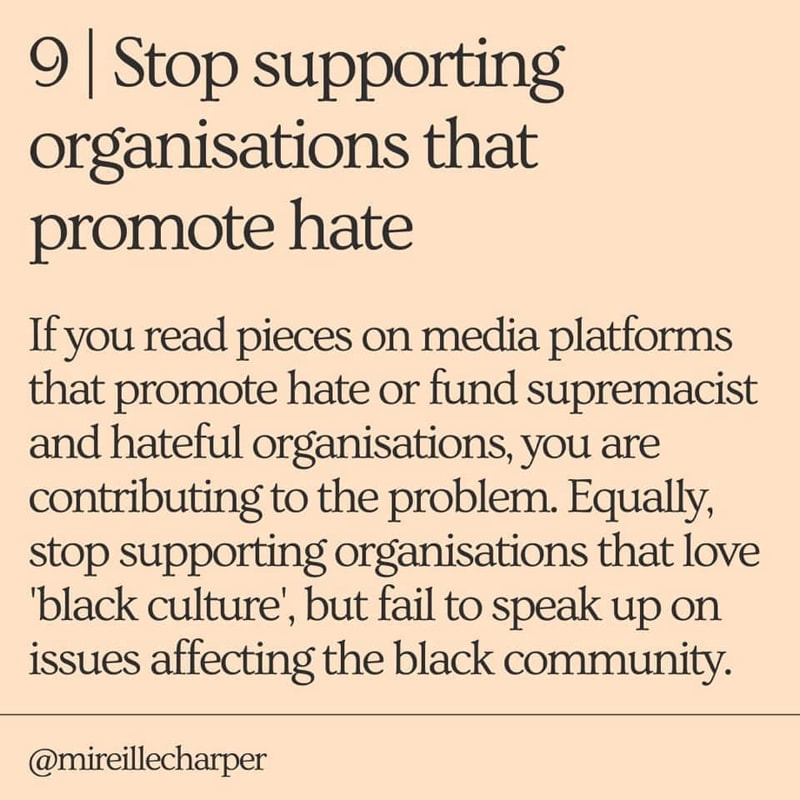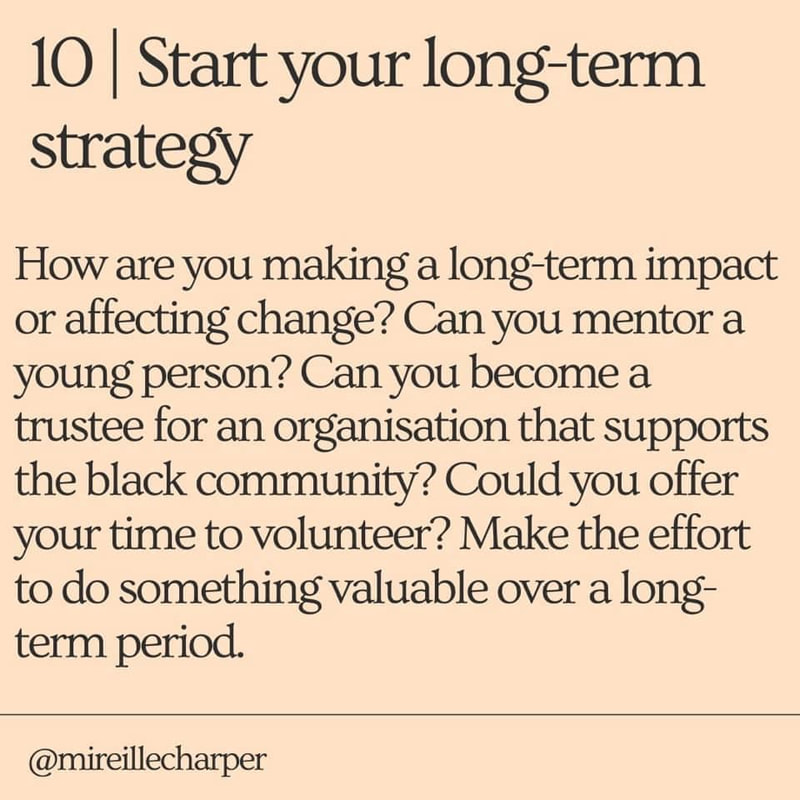Dedicated in sharing resources, literature, organizations, and ways to support the Black Lives Matter Movement, as well as how to be an understanding, supportive, and listening ally.
ALLYSHIP
Mirielle Charper, assistant editor, sensitivity reader, and publicist created the 10 Steps to Non-Optical Allyship, as a starter kit for those wanting to know how they can support their black friends, family, loved ones, partners, and colleagues. Please, remember that it is not up to any person of color, especially black people to teach you everything. It is up to you to learn how you can support.
To learn more about Charper and her work, visit her Instagram accounts: @mireillecharper, @squarepegbooks, @wordplaymag, and @bypnetwork.
To learn more about Charper and her work, visit her Instagram accounts: @mireillecharper, @squarepegbooks, @wordplaymag, and @bypnetwork.
To learn more about allyship, please visit A Guide to Allyship, an open source starter guide to help you become a more thoughtful and effective ally.
ANTI-RACISIM
USC Suzanne Dworak-Peck School of Social Work online Master Social Work program
How to Be Anti-Racist: A Social Worker's Perspective Blog
With the rise of viral videos displaying police brutality and other racial injustices, people across the country are being forced to confront the reality of systemic racism and are committing to the work of dismantling white supremacy.
“A year ago, we would not have dreamed of the opportunities coming from this movement,” said Barbara Solomon, a California Social Work Hall of Distinction inductee, in a panel about addressing whataboutisms in anti-racist social work practice hosted by the California Social Welfare Archives.
“People of all colors are in the streets saying, ‘This shouldn't happen, what can we do?’” Solomon said.
To learn and read more, please visits USC's How to Be Anti-Racist: A Social Worker's Perspective blog.
RESOURCES ABOUT ANTI-RACISM
- Anti-Racist Reading List from Ibram X. Kendi, Chicago Public Library: curated list of books from the author of How to Be Anti-Racist, designed “for people beginning their anti-racist journey.”
- Being Anti-Racist, National Museum of African American History and Culture: guide to discussing race and anti-racism, including activities, talking points and self-reflection ideas for allies.
- Cracking the Code,World Trust: film designed for dialogue by sharing people’s perspectives on the causes and consequences on systemic inequities.
- #DoTheWork Course, Rachel E. Cargle: free, 30-day online course for learning how to be a better ally to Black women.
- How to Be Anti-Racist, Ibram X Kendi: New York Times–bestselling book from the National Book Award–winning author about identifying and rethinking racist beliefs and social change.
- Research Guides: Diversity, Equity & Inclusion: Background/Best Practice, University of Southern California Libraries: landing page for resources recommended by the university, including books, webinars, academic journals and trainings for students and faculty.
- The 1619 Project, The New York Times: ongoing project created by Pulitzer-winning reporter Nikole Hannah Jones to reframe American history by placing the consequences of slavery and the contributions of Black Americans at the center of the narrative.
- The Guide to Allyship: open-source guide for helping people learn how to become better allies to people with marginalized identities.
- The Reality of Diversity, Gender, and Skin Color: From Living Room to Classroom, Finney, K. & Fitzgerald, T: book of personal narratives and social observations that “gives voice to the experiences of marginalized individuals, illuminating the impact of oppression, ostracism, and hate on mental health and wellness.”
BLACK LIVES MATTER FOR KIDS
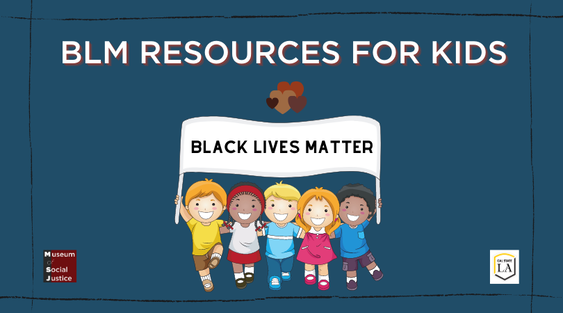
Museum intern and California State University, Los Angeles student, Evelyn Velez, brought together a list of resources to help discuss the Black Lives Matter movement and racial justice with children. Resources include animated movies Black Lives Matter Protests and What Black Lives Matter means to Kids, ways to discuss racial justice, and how kids are taking part in the movement.
Learn more at Black Lives Matter Resources for Kids
Learn more at Black Lives Matter Resources for Kids
THE SUMMIT WELLNESS GROUP
TOP 61 BIPOC ADDICTION & MENTAL HEALTH RESOURCES
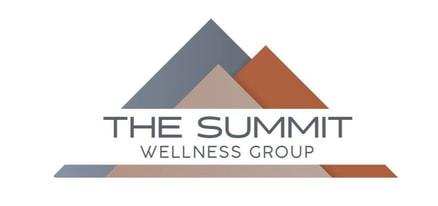
It is no secret that the mental health of BIPOC (Black, Indigenous, and People Of Color) is disproportionately affected compared to that of their white counterparts. According to Mental Health America, 17% of Black people and 23% of Native Americans live with a mental illness. People who identify as two or more races are more likely to report mental illness than any other racial or ethnic group. This is because, along with the internal struggles and trauma that many people face, BIPOC must also withstand racial injustices that intersect every facet of their lives. These hardships that fall on entire communities have detrimental effects on mental health and contribute to increased anxiety, depression, and stress. The guide includes support and resources for the following:
- Facing The Problem
- General BIPOC Resources
- Youth & College Student Resources
- LGBTQ+ Resources
- Resources for the Disabled
- Domestic Violence Resources
- Substance Abuse Resources
- Resources for Women
- Resources for Men


